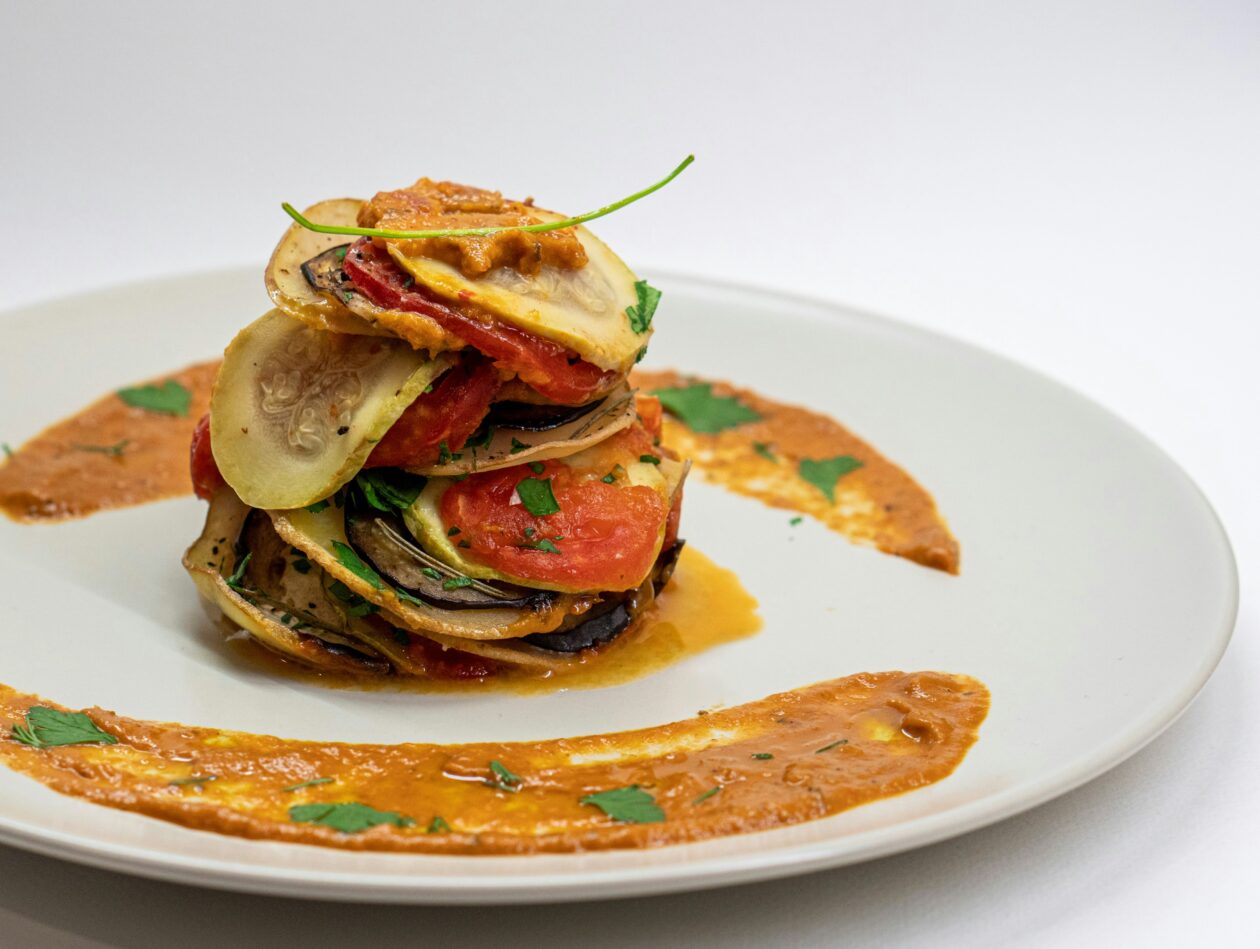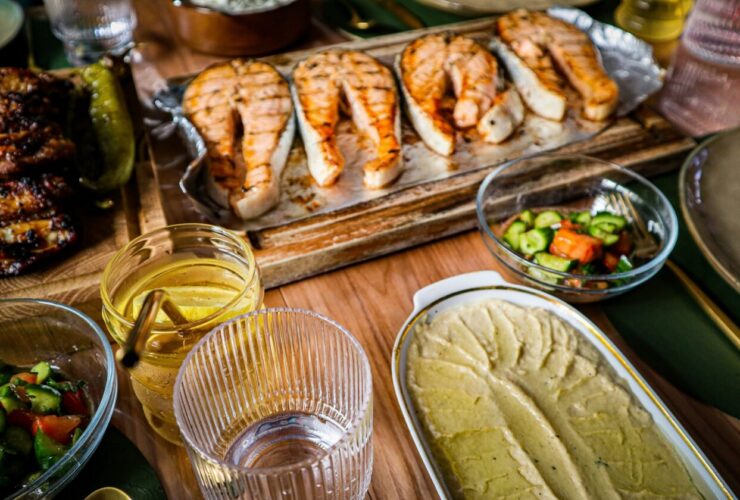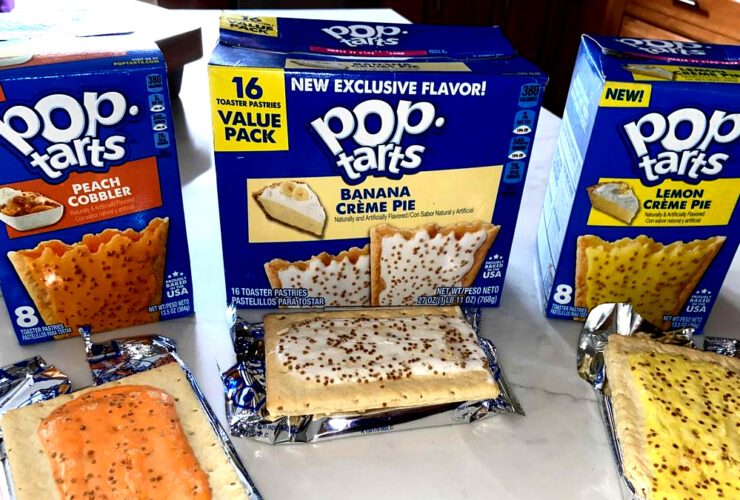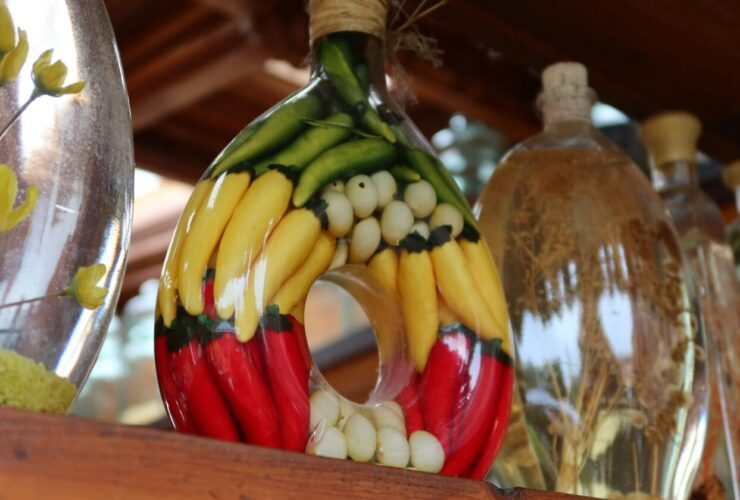Introduction
Is Ratatouille Good for Weight Loss? To find out, let’s explore the dietary factors.
The Provence region is home to the traditional French cuisine known as “ratatouille,” which has gained immense popularity due to its mouthwatering taste and eye-catching presentation. With its emphasis on using fresh, healthful ingredients, Ratatouille, which consists of various seasonal vegetables like tomatoes, zucchini, eggplant, and bell peppers, epitomizes the essence of Mediterranean cuisine. It is a cherished mainstay in culinary traditions worldwide because of its rich history and cultural significance.
The adaptability of Ratatouille is one of its most impressive features. This delectable stew may be a filling main course, a tasty side dish, or a topping for crusty bread or spaghetti. It easily accommodates a wide range of dietary requirements and culinary tastes. It is a favorite of professional chefs and home cooks due to its ability to highlight the abundance of seasonal food and provide countless opportunities for culinary inventiveness.
Let’s tackle the most important question: Is Ratatouille a healthy way to lose weight? Considering this dish’s nutritional composition and possible influence on reaching weight loss objectives is critical as we investigate this question. Ratatouille is unquestionably nutrient-dense and contains fiber, vitamins, and minerals from its vegetable components. However, how well it aids in weight loss relies on several factors, such as cooking techniques, portion sizes, and general dietary habits.
Exploring Ratatouille’s Potential for Weight Loss
The popular French dish ratatouille is made with various healthful ingredients, each adding certain nutritional advantages. The variety of veggies in Ratatouille, from the colorful bell peppers to the substantial eggplant, gives the dish its flavor. Crucial ingredients include bell peppers, tomatoes, onions, garlic, eggplant, and zucchini; these foods are high in nutrients and flavor.
Examining each component separately reveals a wealth of health benefits. For example, eggplant is high in fiber and antioxidants that support digestive health and give you a feeling of fullness. Bell peppers provide vitamin C and other antioxidants, while zucchini adds texture with few calories. Lycopene, linked to improved general health and weight management, is a component of tomatoes. In addition to adding flavor, onions, and garlic include chemicals associated with better heart health and metabolism.
Combined, these components make a satiating meal low in calories and fiber, ideal for individuals trying to lose weight. Ratatouille is a nutrient-dense substitute for calorie-dense meals because of its high vitamin and mineral content, which helps with weight loss while maintaining ideal nutrition. Its low-calorie and high-fiber content may help with weight management objectives by controlling appetite, preventing cravings, and fostering a sensation of fullness.
Here’s a list of nutrition facts for Ratatouille based on the ingredients typically used in its preparation:
- Calories: A serving of Ratatouille (approximately 1 cup) typically contains around 100-150 calories, depending on the specific ingredients and cooking methods used.
- Protein: Ratatouille is not particularly high in protein, but it does contain a moderate amount due to the vegetables used, providing approximately 2-4 grams of protein per serving.
- Carbohydrates: Ratatouille is relatively low in carbohydrates, making it suitable for those following low-carb diets. A serving typically contains around 10-15 grams of carbohydrates.
- Fiber: Ratatouille is a good source of dietary fiber, with a serving providing approximately 3-5 grams of fiber. Fiber helps promote digestive health and can contribute to feelings of fullness.
- Fat: Ratatouille is generally low, particularly if prepared without added oils or fats. A serving typically contains less than 5 grams of fat.
- Vitamins and Minerals: Ratatouille is rich in essential vitamins and minerals, including vitamin A, vitamin C, vitamin K, potassium, magnesium, and various antioxidants. These nutrients support overall health and well-being.
Remember that Ratatouille’s nutritional content may vary based on factors such as portion size, specific ingredients, and cooking methods. Also, homemade Ratatouille may have different nutritional profiles than commercially prepared versions.
Health Benefits of Ratatouille
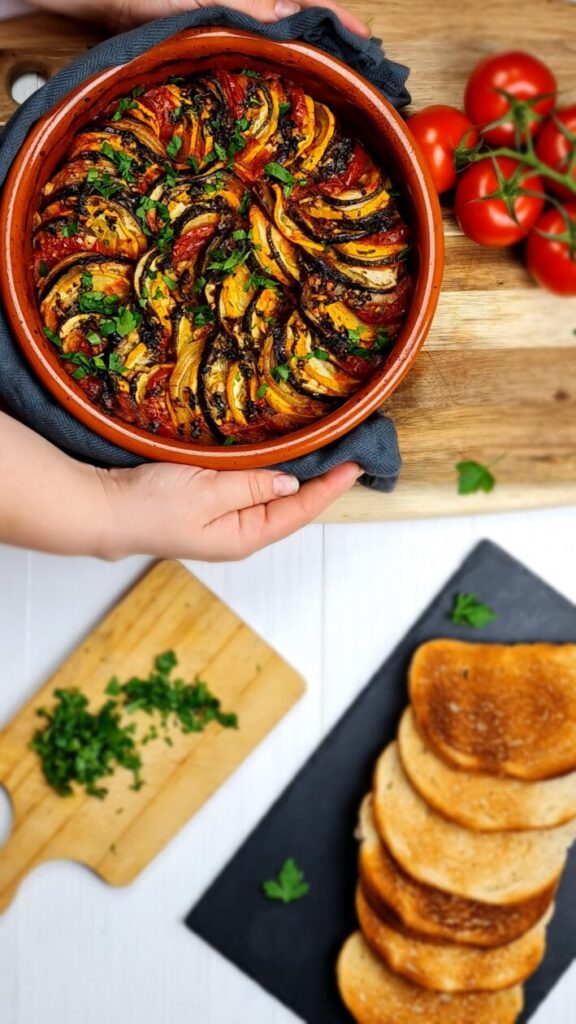
Ratatouille is a nutritional powerhouse that offers a wide range of advantages that can help with weight loss and general wellbeing. First, its low-fat and low-calorie content fits in perfectly with weight loss objectives, letting people enjoy a filling dinner without worrying about consuming too many calories.
In addition, Ratatouille’s high dietary fiber content supports weight control efforts by enhancing digestive health and promoting a full feeling in the stomach. Beyond calorie counts, Ratatouille is a star because of its abundant vitamins and minerals, such as potassium and magnesium, and vitamins A, C, and K. The importance of these micronutrients in immune system support and bone health is well-established, which adds to Ratatouille’s attractiveness as a nutrient-dense food option.
The combination of Ratatouille’s health advantages creates a tempting image for those who are watching their weight and are looking for tasty but nourishing dinner options. By including this vegetable medley in their diet, people can use its antioxidant qualities to fight inflammation and oxidative stress, which can hamper losing weight. Additionally, fiber helps maintain gastrointestinal regularity and blood sugar regulation, creating an environment favorable for long-term weight management. The nutritional profile of Ratatouille highlights its potential as a beneficial dish for weight loss, providing a delicious option for individuals starting a journey towards enhanced health and energy.
Essentially, Ratatouille becomes a powerful ally in the fight for holistic wellness and weight loss, surpassing its culinary appeal. Its many advantages—from calorie control to nutrient density—make it flexible for people to juggle their dietary choices and health objectives. People who adopt Ratatouille as a regular part of their diet can see a positive shift in their overall health and enjoy the delicious flavors of the dish together with the benefits of long-term weight loss. Ratatouille is a classic example of how taste and nutrition can coexist, even as the food scene changes, encouraging people to enjoy their path to a happier, better lifestyle.
Ratatouille Recipe and Weight Loss Plan
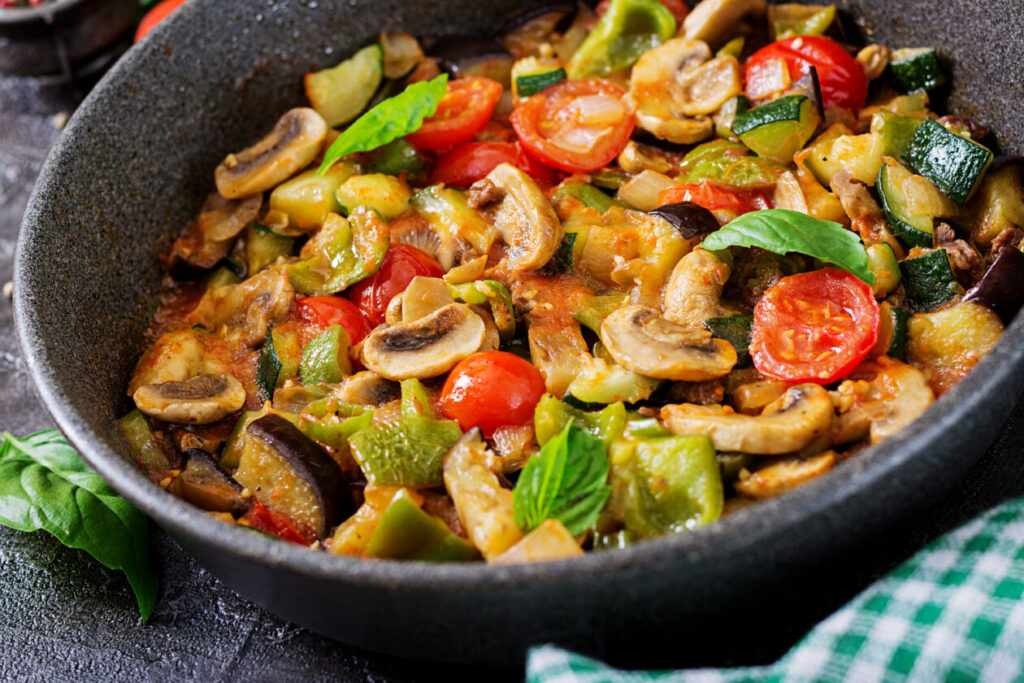
Take a culinary adventure with our detailed instructions for making the ideal Ratatouille.
- To start, gather a variety of seasonal and fresh veggies, like:
- Bell peppers
- Tomatoes
- Onions
- Garlic
- Zucchini
- Use these ingredients as the base for this delicious dish.
- Cut the vegetables into uniform pieces so that the tastes will blend harmoniously and the cooking will be consistent.
- Then, to make a visually appealing presentation, stack the vegetables in a baking dish after sautéing them in olive oil until they are soft.
- Bake the Ratatouille until it is perfectly cooked, allowing the tastes to meld and the textures to blend into a harmonious blend of flavors.
- Savor the healthful goodness of Ratatouille with every bite, knowing that the ingredients are packed with nutrients to support your body.
Ratatouille can be a great addition to a well-balanced meal plan to help you lose and maintain weight over time. Examine a customized weight loss plan with Ratatouille as the main course, providing a delicious but health-conscious way to indulge in food. Explore the nuances of portion control and nutrient density, realizing that Ratatouille can satisfy hunger while providing vital vitamins and minerals necessary for good health. Accept the concepts of moderation and mindful eating, and let Ratatouille be a tasty companion on your journey to a more health-conscious way of living. You can experience the transformative power of delicious, healthful food by adopting Ratatouille as a mainstay of your weight loss plan rather than merely a dish.
Ratatouille Variations
Take your palate on a trip with a wide range of ratatouille preparations catered to different palates and dietary needs. Even though this traditional French cuisine is still very popular, there are countless ways to prepare it. Explore the options of Ratatouille to meet your specific dietary requirements and personal tastes, from rustic versions to sophisticated twists.
Examine creative ways to amp up the flavor and excitement of the classic ratatouille recipe. Include high-protein legumes such as lentils and chickpeas to enhance the dish’s nutritional value and heartiness. Try different combinations of cheese and herbs to improve the dish’s flavor. For a filling dinner, try pairing Ratatouille with nutritious grains like spaghetti, brown rice, or quinoa. Accept seasonal items to give your dishes a burst of color and freshness.
Make Ratatouille fit various dietary requirements so that it’s a dish that everyone can savor. Whatever your nutritional requirements—plant-based, gluten-free, or low-carb—a ratatouille version will work for you. Investigate plant-powered modifications that highlight seasonal veggies to create a nutrient-dense feast. Enjoy variants that are loaded with cheese for a sumptuous treat. The culinary options for Ratatouille are virtually limitless, allowing for personal expression while reaping health advantages.
Ratatouille for Every Season
Discover the adaptability of Ratatouille as it varies with the seasons, yielding to the ever-changing abundance of nature. Every season offers various ingredients that can be skillfully incorporated into this classic recipe, from spring’s crisp freshness to fall’s meaty fullness. Bring in the brightness of spring with soft asparagus, delicate peas, and aromatic herbs to give your Ratatouille a taste explosion of the moment. Savor the bounty of sun-ripened tomatoes, eggplants, and peppers during the summer months, encapsulating the essence of the Mediterranean countryside with each bite.
As the leaves turn to gold and the weather cools, go for hearty root vegetables such as sweet potatoes, pumpkin, and squash to give your fall ratatouille recipes a cozy feel. Every season offers a fresh gastronomic experience with Ratatouille, beckoning you to relish the essence of the abundant abundance of nature with every bite.
Use the nutritional value of seasonal products to create a ratatouille appropriate for the season. In addition to being flavorful, seasonal food is loaded with vital vitamins, minerals, and antioxidants that promote general health and wellbeing. You may increase the nutritional content of your Ratatouille while also improving its flavor by adding fresh, locally sourced ingredients. From the moisturizing qualities of summer tomatoes to the immune-boosting qualities of winter squash, each seasonal item adds its special nutritional profile to create a dish that feeds the body and the soul. With every mouthwatering dish of Ratatouille, embrace the idea of eating by the seasons and enjoying the abundance of nature.
Bring new life to the traditional ratatouille recipe by experimenting with seasonal modifications and ingredient substitutions. Play around with the bright colors and tastes of each season, using a variety of veggies to make dishes that are both aesthetically beautiful and satisfying to the palate. For a cool take on the traditional, replace the tomatoes in spring with luscious strawberries or soft radishes.
Enjoy the spicy tang of arugula or the sweetness of ripe peaches this summer to give your Ratatouille a surprising depth and complexity. Accept the earthy richness of mushrooms or the delicate sweetness of caramelized onions as fall approaches, adding coziness and warmth to your meal. The choices are unlimited for Ratatouille; it provides a blank canvas to exhibit the splendor and abundance of each season’s harvest.
Ratatouille Pairings
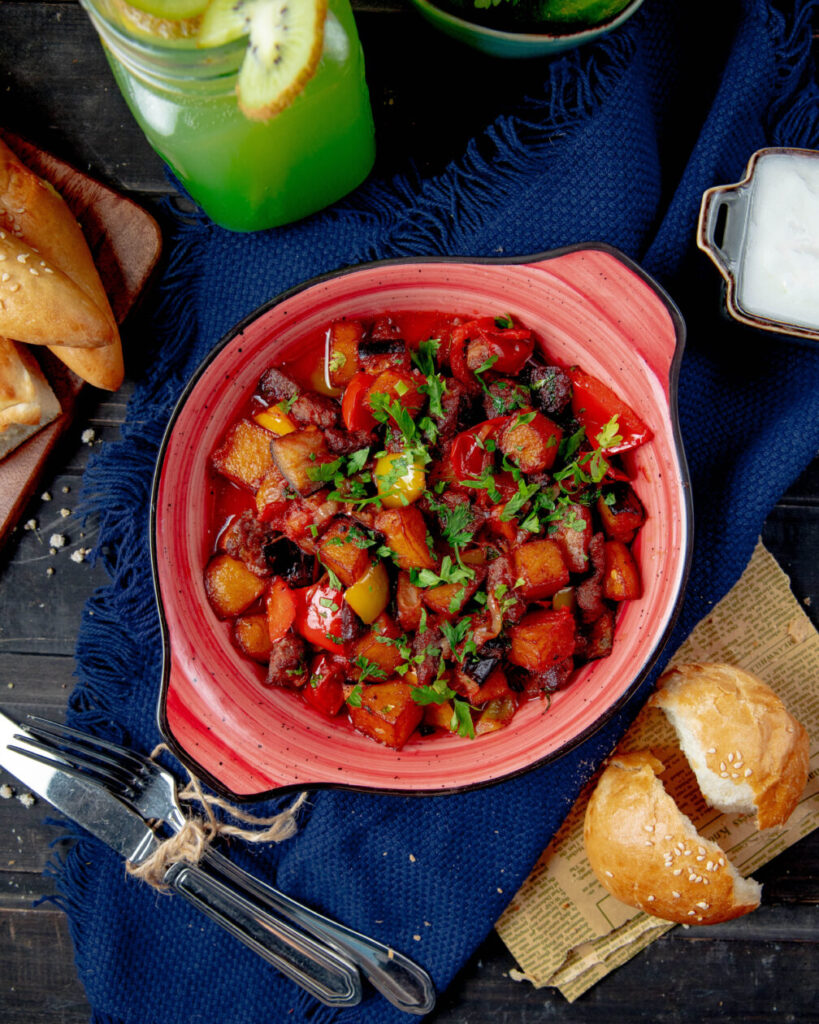
Examine the ideal wine and cheese combinations to enhance your ratatouille experience and learn the art of culinary harmony. The taste of this traditional dish can be improved by choosing the right wine and cheese, creating a symphony of taste sensations on your tongue whether you’re enjoying a romantic supper for two or throwing a party for friends. Every type of wine, from bold reds to crisp whites, provides a different counterpoint to the Ratatouille’s rich blend of veggies, and thoughtfully chosen cheese pairings give each bite more nuance and complexity.
Explore the world of cheese and wine pairings with pros’ suggestions designed to bring out the flavors of Ratatouille. If you like red wine, go for a medium-bodied variety like Merlot or Grenache; their fruity undertones and silky tannins perfectly counterbalance the savory sweetness of the Ratatouille. Alternatively, for a crisp white wine match that awakens the palate and highlights the fresh flavors of the dish, try the crisp acidity of a Chardonnay or Sauvignon Blanc. Classic cheeses like creamy goat cheese or aged Parmesan, with their velvety textures and nutty undertones, elevate every taste of Ratatouille to a luxury level.
Learn the techniques for matching wine and cheese that bring the flavors of Ratatouille to a whole new level. Ratatouille’s tomato-based sauce pairs well with the acidic and fruity characteristics of red wines like Syrah or Pinot Noir, bringing out the rich flavors and giving each bite more complexity.
On the other hand, rich, earthy flavors of eggplant and zucchini are pleasantly counterbalanced by the crisp acidity of white wines such as Riesling or Pinot Grigio, which also serves to cleanse and brighten the palate in between bites. With each bite of Ratatouille, create a symphony of flavors that dance over your taste receptors by pairing these wines with complimentary cheeses like creamy Brie or sharp cheddar.
Is Ratatouille Good for Weight Loss?
Ratatouille can indeed be a beneficial addition to a weight loss diet. This classic French dish primarily comprises vegetables like tomatoes, zucchini, eggplant, and bell peppers, which are low in calories and fiber. These ingredients help promote satiety, keeping you fuller for longer periods, thus aiding in weight management.
In detail, Ratatouille is a nutrient-dense dish with numerous health benefits conducive to weight loss. Its low-calorie content makes it an excellent option for those aiming to reduce calorie intake while enjoying flavorful meals. Additionally, the high fiber content of ratatouille aids in digestion promotes gut health, and helps regulate blood sugar levels, all of which contribute to weight management.
Moreover, Ratatouille is rich in essential vitamins and minerals, including vitamins A, C, and K, as well as potassium and magnesium. These nutrients support overall health and wellbeing, providing your body with the necessary fuel to function optimally during weight loss.
A typical serving of Ratatouille (approximately 1 cup) contains around 80 calories, 5 grams of fiber, 3 grams of protein, and various vitamins and minerals, making it a wholesome and satisfying option for those looking to shed pounds.
Ratatouille is a nutritious and flavorful dish that can support weight loss goals due to its low-calorie, high-fiber composition and rich nutrient profile. By incorporating this delicious dish into your diet, you can enjoy a satisfying meal while working towards achieving a healthier weight.
FAQs About Ratatouille
1. Is Ratatouille a Good Diet Food?
Ratatouille can be a nutritious addition to a diet focused on weight management. Its combination of vegetables provides essential nutrients and is low in calories and fiber, making it filling and satisfying.
2. How Many Calories are in Ratatouille?
The calorie content of Ratatouille can vary based on ingredients and serving size. On average, one cup of Ratatouille contains around 80-100 calories.
3. What is Ratatouille Good For?
Ratatouille is good for overall health due to its nutrient-rich ingredients like tomatoes, zucchini, eggplant, and bell peppers. It’s rich in vitamins, minerals, and antioxidants, supporting various bodily functions and promoting wellbeing.
4. Is Ratatouille Better the Next Day?
Ratatouille often tastes even better the next day as the flavors have had time to meld together. This makes it a convenient and flavorful option for meal prep.
5. Does Ratatouille Have a Lot of Calories?
Ratatouille is generally low in calories, especially considering its high nutritional value. It’s a satisfying dish that can be enjoyed without excessive calorie intake.
6. How Much Protein is in Ratatouille?
While Ratatouille is not primarily a protein-rich dish, it still contains a moderate amount of protein, typically around 3-5 grams per serving, depending on the specific ingredients used.
7. Is Ratatouille High in Carbs?
Ratatouille contains carbohydrates from its vegetables, but it’s considered low in carbs compared to other dishes. The complex carbs from the vegetables provide sustained energy.
8. Is Ratatouille Good for Adults?
Yes, Ratatouille is suitable for adults as part of a balanced diet. Its nutrient profile supports overall health and can be enjoyed by individuals of all ages.
9. What are 5 Foods in Ratatouille?
The main ingredients in Ratatouille typically include tomatoes, zucchini, eggplant, bell peppers, and onions. However, variations may consist of additional vegetables or herbs.
10. How Many Calories are in 100g of Vegetable Ratatouille?
The calorie content of 100 grams of vegetable ratatouille can vary but is generally around 50-70 calories, depending on the specific ingredients and cooking methods used.
11. How Many Calories Are in a Tin of Ratatouille?
The calorie content of a tin of Ratatouille can vary based on brand and serving size. It’s essential to check the nutrition label for specific calorie information.
12. What is the Best Way to Eat Ratatouille?
Ratatouille can be enjoyed as a flavorful vegetable dish, served over rice or pasta, or alongside grilled meats or fish for a complete meal.
13. Simple Ratatouille Dish Weight Loss
A simple ratatouille dish can support weight loss goals due to its low-calorie content and high nutritional value. Pair it with lean protein for a balanced meal.
14. Easy Ratatouille Dish Weight Loss
An easy ratatouille dish for weight loss can be made by sautéing vegetables with minimal oil and seasoning them with herbs and spices for flavor without excess calories.
15. Chicken Ratatouille Dish Weight Loss
Incorporating chicken into Ratatouille adds lean protein, making it a satisfying and balanced option for those looking to lose weight while still enjoying flavorful meals.
16. Ratatouille Dish Weight Loss Ingredients
To make a ratatouille dish conducive to weight loss, focus on using fresh, seasonal vegetables, limiting added fats, and incorporating lean proteins like chicken or tofu.
17. Ratatouille Recipe
A classic ratatouille recipe typically includes tomatoes, zucchini, eggplant, bell peppers, onions, garlic, and herbs like thyme and basil, cooked in olive oil until tender.
18. Is Ratatouille Good for You?
Ratatouille is good for you as it provides essential nutrients, vitamins, and minerals while being low in calories and rich in fiber and antioxidants.
19. Weight Watchers Ratatouille
Ratatouille can be a suitable option for those following the Weight Watchers program, as it’s a filling and satisfying dish that fits well within the program’s points system.
20. Fat-Free Ratatouille
While traditional Ratatouille does contain olive oil for flavor and cooking, you can reduce or omit the oil to make a fat-free version. The dish will still be flavorful and nutritious, though the texture may vary slightly.
Conclusion
In addition to its delicious flavor, Ratatouille is noteworthy for its many health advantages. This traditional French dish is a nutritional powerhouse made from a rainbow of colorful veggies like tomatoes, zucchini, eggplant, and bell peppers. Every component, from the fiber-rich eggplant to the antioxidant-rich tomatoes, promotes general health. Furthermore, Ratatouille is flexible and may be made in countless ways to accommodate various dietary needs and palates.
Ratatouille can be a great addition to any diet plan for people who are trying to lose weight or stay at a healthy weight. Its nutrient density, high fiber content, and low calorie count make it a pleasant and filling choice without sacrificing flavor. Adding Ratatouille to their diets can assist their weight loss objectives while enjoying a tasty dish. Its adaptability also makes it possible to combine it with whole grains and lean proteins in novel ways, increasing its usefulness for managing weight.
In summary, Ratatouille is a delicious dish and a nutritional powerhouse suited for people of all ages and dietary choices. Ratatouille is a delicious and nutritious dish that may be eaten on its own, with lean proteins or whole grains for individuals trying to control their weight and enhance their general health. So why not enjoy the goodness this famous dish brings to the table and appreciate its flavors? Ratatouille is a tasty and nutritious meal that may be included in a balanced diet to promote overall wellness.
Reference
Tan, B. L., Norhaizan, M. E., & Liew, P. (2018). Nutrients and Oxidative Stress: Friend or Foe? Oxidative Medicine and Cellular Longevity, 2018. https://doi.org/10.1155/2018/9719584
Kelly, R. K., Calhoun, J., Hanus, A., Payne-Foster, P., Stout, R., & Sherman, B. W. (2023). Increased dietary fiber is associated with weight loss among Full Plate Living program participants. Frontiers in Nutrition, 10. https://doi.org/10.3389/fnut.2023.1110748
Kim, J. Y. (2021). Optimal Diet Strategies for Weight Loss and Weight Loss Maintenance. Journal of Obesity & Metabolic Syndrome, 30(1), 20-31. https://doi.org/10.7570/jomes20065
Was this helpful?

Joseph Emb, RDN
Founder of StyleVitally.com | Registered Dietitian & Wellness Advocate
What I Cover:
I’m passionate about connecting nutrition science and everyday wellness to help people live healthier, more vibrant lives. I write about evidence-based nutrition, mindful eating, sustainable lifestyles, and holistic well-being at StyleVitally.com.
My Background:
The University of Texas in Austin, where I earned my Dietetics diploma, laid the groundwork for my nutrition and health career. My training and hands-on experience taught me the science and art of using nutrition to enhance health and well-being.
Professional Journey:
I’m an RDN with lots of experience. I’ve helped people seeking tailored nutritional recommendations in clinical settings and community outreach programs. My constant learning and professional development ensure that my recommendations are always based on the latest evidence.
Ethical Commitment:
My practice prioritizes integrity. My content is transparent and objective, following the most significant ethical standards. I can give my audience unbiased advice because I’m not affiliated with food businesses or industry associations. I want to help people make informed health decisions that match their values and ambitions.
Join Me on the Wellness Journey:
Join me on the path to vitality and well-being, whether facing nutritional issues, seeking sustainable lifestyle changes, or simply wanting a better, happier you. We’ll discover how diet, mindfulness, and holistic well-being can maximize your potential.


